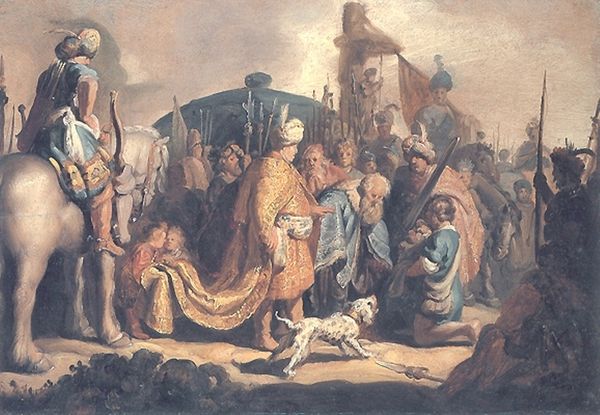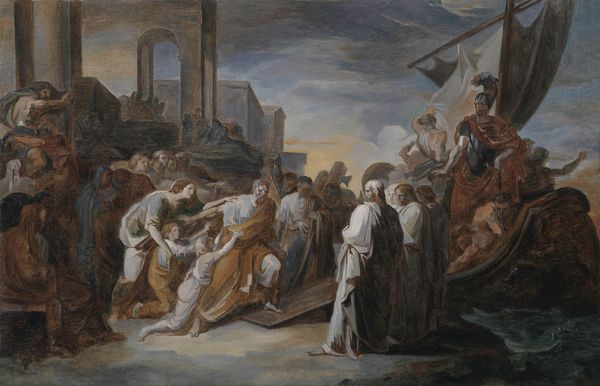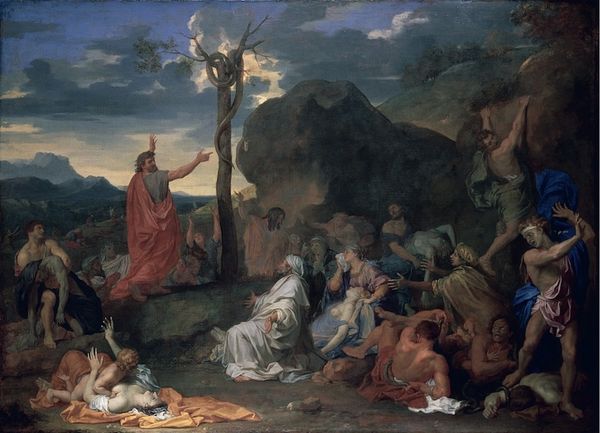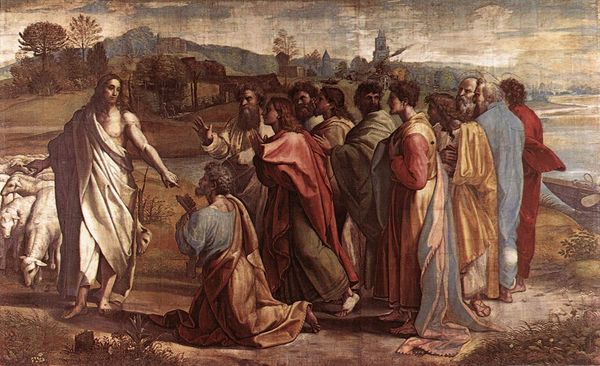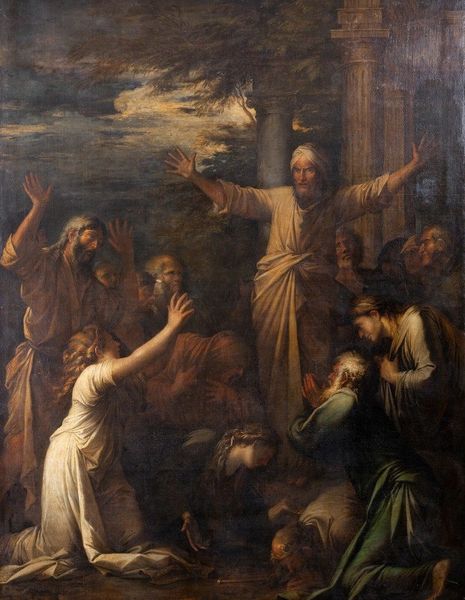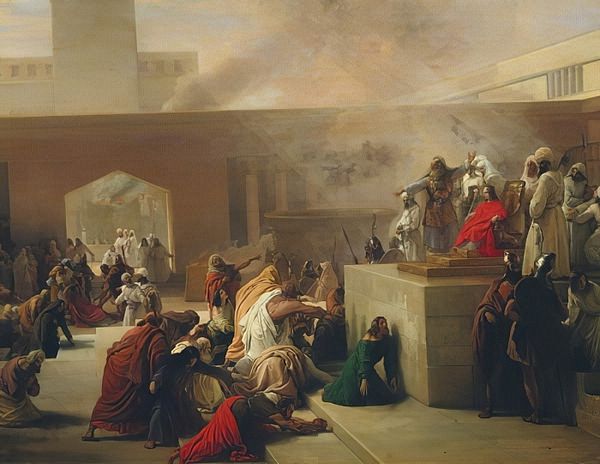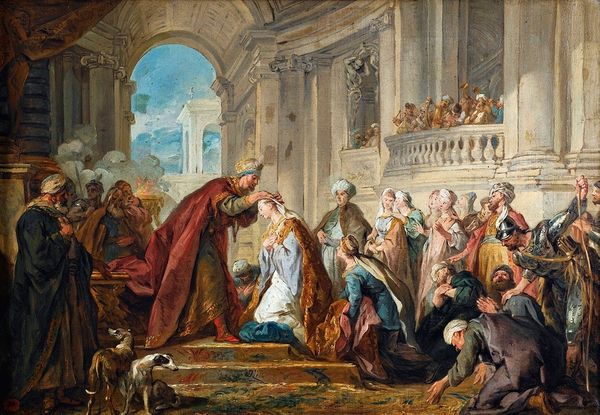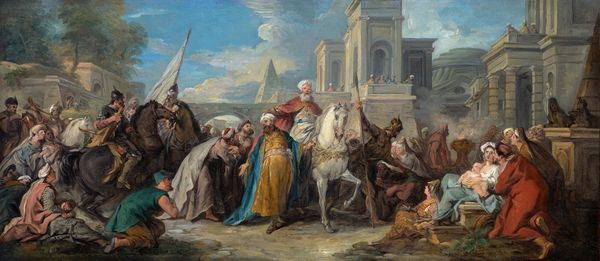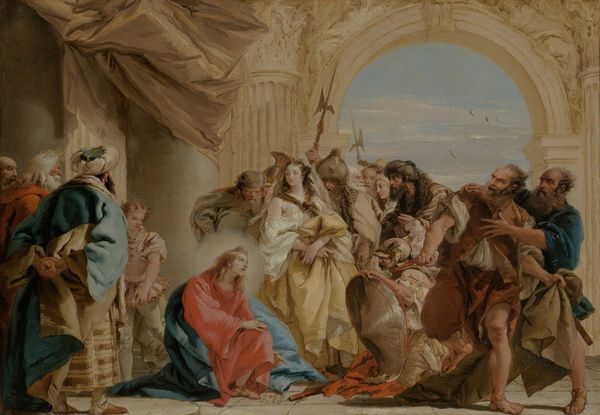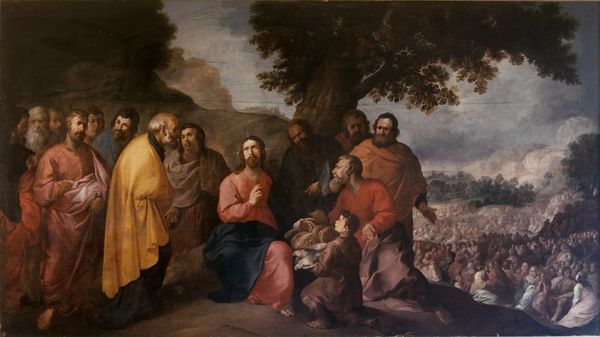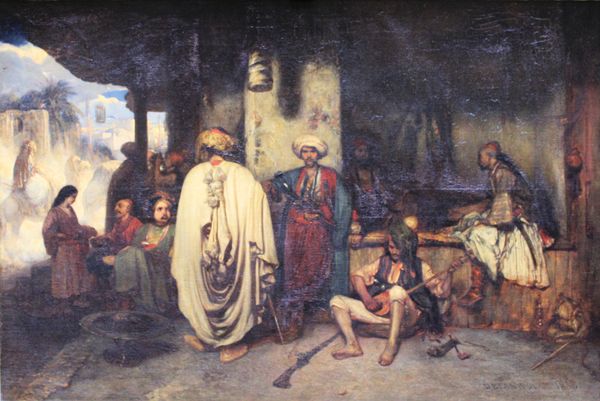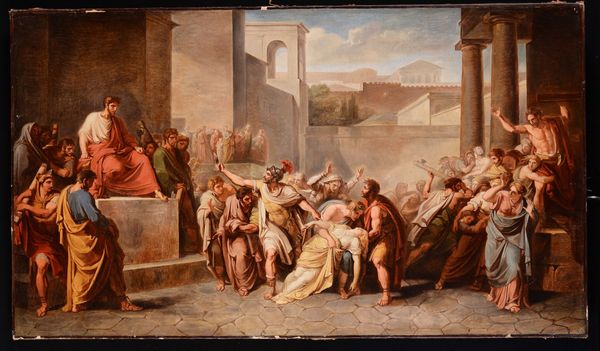
painting, oil-paint
#
baroque
#
painting
#
oil-paint
#
landscape
#
oil painting
#
group-portraits
#
history-painting
Dimensions: height 32 cm, width 73 cm, depth 5 cm
Copyright: Rijks Museum: Open Domain
Curator: Jacob de Wit's monumental oil painting, "Moses Choosing the Seventy Elders," from 1736-1737, immediately strikes one as a scene overflowing with dramatic potential. What catches your eye? Editor: It's undeniably Baroque in its grandeur, almost theatrical in its arrangement of figures. But I'm also taken by the landscape backdrop; the clouds gathering above that mountainous area certainly add drama to the whole scene. The dynamism certainly hints at the turbulent historical narratives present. Curator: Absolutely, there’s an overt tension visible in the application of paint, especially in how the landscape contributes to the story, hinting perhaps at the pressures of leadership and communal decision-making in a shifting sociopolitical background. The artist’s method really reflects something important here, considering De Wit held prominent civic posts as well as religious roles, it would only follow that his own awareness of human systems would shine through like this. Editor: Let’s focus on the elders. Note how they're situated in proximity to Moses, right near what looks like a religious offering or important artifact between them. De Wit draws our attention to their relationship through composition. Curator: These men, they're not just figures, they’re part of the infrastructure holding up the system and narrative here. Look how their cloaks create an echoing motif; even what material is available is highlighted in the muted neutral tones. Editor: But even if there’s a symbolic significance in their muted dress, consider how Moses, centrally staged and brightly robed, dominates the palette. Curator: True, this reinforces Moses as the active instigator, though it makes me ponder about the role of artistic patronage and the expectations of artists creating for religious bodies. In what ways do the materials here reflect wider themes? Editor: Perhaps that in history, religious or social position granted access to better resources; just as here, De Wit grants better representation to his patron by way of contrast, but ultimately, our views seem to converge into a united experience with the historical artwork here.
Comments
No comments
Be the first to comment and join the conversation on the ultimate creative platform.
